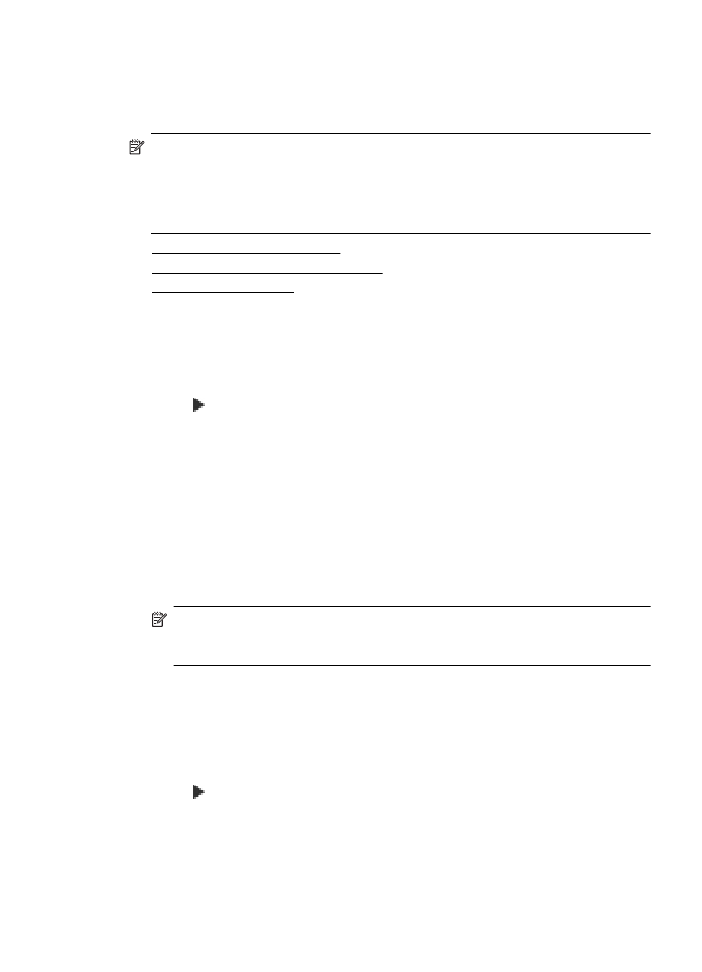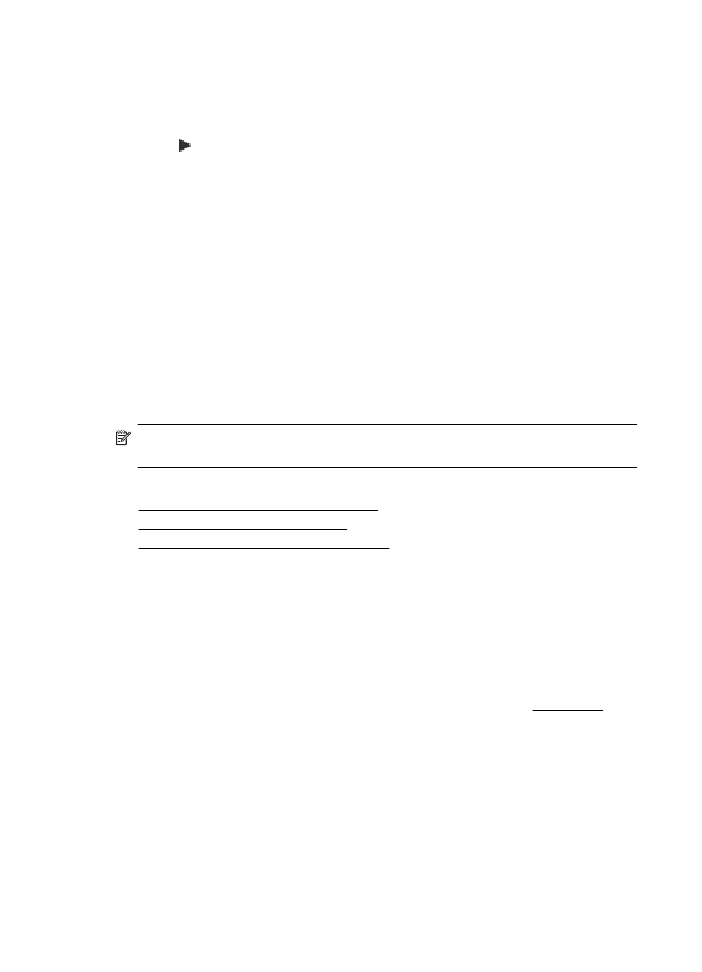Remove numbers from the junk fax list
•
Remove numbers from the junk fax list
•
Print a Junk Fax Report
Add numbers to the junk fax list
You can block specific numbers by adding them to the junk fax list.
To add a number to the junk fax list
1. Touch (right arrow), and then touch Setup.
2. Touch Fax Setup, and then select Basic Fax Setup.
3. Touch Junk Fax Blocker.
4. A message appears stating that Caller ID is required to block junk faxes. Touch OK
to continue.
5. Touch Add Numbers.
6. To select a fax number to block from the caller ID list, touch Select from Caller ID
History.
- or -
To manually enter a fax number to block, touch Enter new number.
7. After entering a fax number to block, touch Done.
NOTE: Make sure you enter the fax number as it appears on the control panel
display, and not the fax number that appears on the fax header of the received
fax, as these numbers can be different.
Remove numbers from the junk fax list
If you no longer want to block a fax number, you can remove a number from your junk
fax list.
To remove numbers from the list of junk fax numbers
1. Touch (right arrow), and then touch Setup.
2. Touch Fax Setup, and then touch Basic Fax Setup.
3. Touch Junk Fax Blocker.
4. Touch Remove Numbers.
5. Touch the number you want to remove, and then touch OK.
Receive a fax
53
Print a Junk Fax Report
Use the following procedure to print a list of blocked junk fax numbers.
To print a Junk Fax Report
1. Touch (right arrow), and then touch Setup.
2. Touch Fax Setup, and then touch Basic Fax Setup.
3. Touch Junk Fax Blocker.
4. Touch Print Reports, and then touch Junk Fax List.
Receive faxes to your computer using HP Digital Fax (Fax to PC and Fax to Mac)
If the printer is connected to your computer with a USB cable, you can use HP Digital
Fax (Fax to PC and Fax to Mac) to automatically receive faxes and save faxes directly
to your computer. With Fax to PC and Fax to Mac, you can store digital copies of your
faxes easily and also eliminate the hassle of dealing with bulky paper files.
Received faxes are saved as TIFF (Tagged Image File Format). Once the fax is
received, you get an onscreen notification with a link to the folder where the fax is
saved.
The files are named in the following method: XXXX_YYYYYYYY_ZZZZZZ.tif, where
X is the sender's information, Y is the date, and Z is the time that the fax was received.
NOTE: Fax to PC and Fax to Mac are available for receiving black-and-white
faxes only. Color faxes are printed instead of being saved to the computer.
This section contains the following topics:
•
Fax to PC and Fax to Mac requirements
•
Activate Fax to PC and Fax to Mac
•
Modify Fax to PC and Fax to Mac settings
Fax to PC and Fax to Mac requirements
•
The administrator computer, the computer that activated the Fax to PC or Fax to
Mac feature, must be on at all times. Only one computer can act as the Fax to PC
or Fax to Mac administrator computer.
•
The destination folder's computer or server must be on at all times. The destination
computer must also be awake, faxes will not be saved if the computer is asleep or
in hibernate mode.
•
Paper must be loaded in the input tray. For more information, see Load media.
Activate Fax to PC and Fax to Mac
On a computer running Windows, you can use the Digital Fax Setup Wizard to activate
Fax to PC. On a Macintosh computer, you can use the HP Utility.
To set up Fax to PC (Windows)
1. From the computer desktop, click Start, select Programs or All Programs, select
the folder for your HP printer, and then select the option for your HP printer.
2. Double-click Fax Actions, and then double-click Digital Fax Setup Wizard.
3. Follow the on-screen instructions.
Chapter 5
54
Fax

